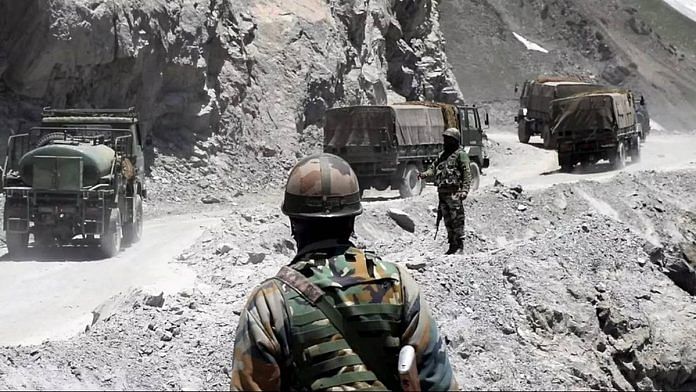New Delhi: The 16th round of Corps Commander-level talks between India and China began at around 9.30 am Sunday morning with both sides looking to ease the military stand-off in eastern Ladakh that began in May 2020. Prior to this, the 15th round of talks was held on 11 March.
While the Indian side continues to see disengagement at Patrol Point (PP) 15 – Hot Springs area – as low-hanging fruit, the mobilisation of a large number of troops and equipment along the Line of Actual Control (LAC) by China remains a concern.
That, along with the vexed issue of Depsang Plains, continues to be the real challenge for India, sources in the defence and security establishment told ThePrint.
Another issue that needs to be resolved is that of the Demchok area where the Chinese have built additional tents near the Charding Nilung Nullah. However, sources said that like PP 15, this is also an issue that can be resolved easily.
India has been seeking a status quo ante when it comes to PP15, which means that Chinese will have to return to their April 2020 positions.
The 16th round of talks is being held on the Indian side of the Chushul Moldo Meeting Point with the Indian delegation being led by Lt Gen. A. Sengupta, Commander of the 14 Corps, also known as the Fire and Fury Corps.
The military stand-off erupted in 2020 following a violent clash between Indian Army personnel and troops of the Chinese People’s Liberation Army (PLA) on the northern banks of Pangong Tso.
Tensions then peaked after a bloody clash in the Galwan Valley on 15 June 2020 resulted in the deaths of 20 Indian soldiers and several PLA troops.
Following the clash in Galwan, Indian troops carried out a daring operation on the intervening night of August 29-30, capturing the heights on the southern banks of Pangong Tso, overlooking China’s Moldo Garrison.
Since then, while both sides have taken measures to de-escalate tensions in Galwan Valley, north and south of Pangong Tso and the Gogra area, the situation remains tense in Hot Springs.
Sources said that while the Chinese did withdraw a large number of troops from the area, there are still about 35-50 soldiers on each side in Hot Springs, where disengagement was first agreed upon in July 2020, almost immediately after the Galwan clash.
Army chief Gen. Manoj Pande had said in May this year that the main conflict between New Delhi and Beijing concerns the border and that China intends to keep the “boundary issue” alive.
But while the Indian side feels that the Hot Springs issue will be resolved, there is little agreement on the issue of Depsang Plains, which is different from the ongoing stand-off.
As reported earlier, the Chinese have been blocking Indian patrols which go by foot beyond a feature called the ‘Bottleneck area’, thereby limiting India’s access to PP 10, 11, 12, 13. In response, Indian forces also block Chinese patrols from moving beyond the bottleneck area.
The Chinese claim line here is about 1.5 km from an Indian military camp in an area known as Burtse.
Besides its proximity to Daulat Beg Oldi, where India has a landing strip, what makes the area important from a strategic point of view is that if the Chinese move further into the Indian side of the LAC, they could gain control of the critical Darbuk-Shyok-Daulat Beg Oldi (DS-DBO) road and also attempt to take over the Saser La pass in a bid to cut off Siachen Glacier from India.
(Edited by Amrtansh Arora)
Also Read: Jaishankar pushes for ‘complete disengagement’ at LAC in Bali meeting with Wang Yi






